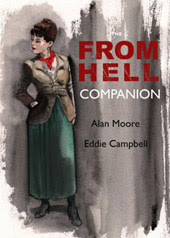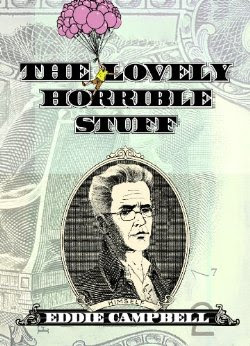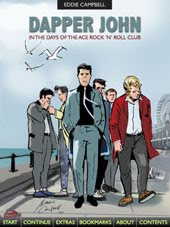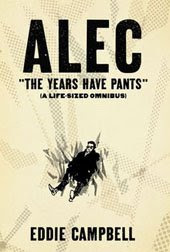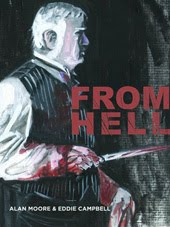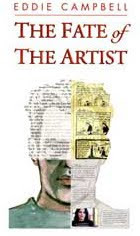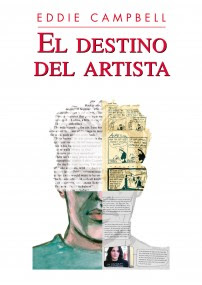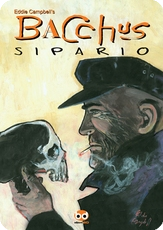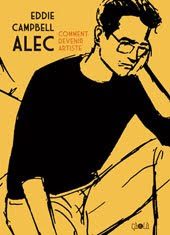I wrote in the comments here yesterday that one of the tasks facing an author who has a book coming out is to create the context in which it will be received. This is actually of crucial importance. It doesn't exist in a vacuum. The author may be advancing ideas or characters established already in his previous books or in somebody else's, and the people who would like to know may miss hearing about it if he or she does not speak it loudly and clearly. The author may wish to be seen in a certain company, and get the prime mover of that circle to write them a note of approval. They may want to be regarded as a humble practitioner within a genre or a vandalous subverter of the same genre, and they may lose the battle if they do not make it clear which. They may want to appeal to adults and get an international Vodka distiller as backer, or to teenage boys and get a video-game company on board. It's all part of the context. The problem I always face Is that I have to try to make adjustments to a context that has already been established by people who see no contradiction in calling a book by definition 'a hardcover trade paperback' or in describing two identical copies of another book as 'These two graphic novels.'
Wednesday, 26 August 2009
Tuesday, 25 August 2009
i backed myself into a corner of stupidity a couple of days ago. The comic book world, which is an area of Hell to which I appear to have been consigned for all Eternity, temporarily broke my head. I thought it might make my sentence more bearable if I stopped blogging. I managed to hold to that for only one day and now I'm back with a completely new subject. PUBIC HAIR. What got me started was this very amusing opinion piece from The Melbourne Age by Cordelia Fine ("that rare academic who's also an excellent writer" -Library Journal),
I feel compelled to view that wonderful painting "L'origine du Monde' by Gustave Courbet (1866).

I love the way that paintings attract to themselves strange but glorious histories:

Behind this cover you will find the story of a "dwarf named Bergamme" who "set fire to the Grand Central Museum on March 23, 2020." and " in his half-burned state sneaked off with Courbet’s famous work L’Origine du monde." (this is juicily close to our own Zany the dwarf being convicted for stealing the Mona Lisa in Leotard) "All that may ever be understood of the Bergamme case is contained in the confession he made to the narrator/reporter of this account before he died from the burns. L’Origine du monde is a puzzling, tragicomic detective novel, and a criminal investigation into philosophical musings, which delves into the nature of modern art. It has been nominated for the Prix Interallié."
It took a minute to strike me as odd that the above summary of a French language book is in English. I was on the site of an organization called The French Publisher's Agency, which i hadn't heard of before "If you want to sell foreign books to American publishers, complaining at length or denouncing America's so-called 'cultural isolation' won't be of any help: I thought we just had to go by the rules, I mean the American rules of a reliable agent, of personal contacts and a harsh book selection. While some French professionals mocked the idea, as it always happens in our country, some others agreed, and this is how it all started.". I bet you'd have to change that cover though, mes amis.
Before we leave this rambling consideration of female pubic hair, it must be added that among the most strangely and charmingly erotic images in the history of art are those in the series of ladies muffs engraved by Wenzel Hollar (1607-1677):

The final frontier of womanhood is under siege from the "beauty" police.
EXPERTS estimate that if deforestation continues to increase at current rates, by the year 2037 there will be no female pubic hair left in Australia.
Every day, in salons across the country, an area of pubic hair the size of Richmond is covered in hot wax and ripped out from the roots. Some of it may be old growth that has been flourishing undisturbed for years, perhaps even decades. But in literally minutes it is gone.
I feel compelled to view that wonderful painting "L'origine du Monde' by Gustave Courbet (1866).

I love the way that paintings attract to themselves strange but glorious histories:
The commission is believed to have come from Khalil Bey, a Turkish diplomat, former ambassador of the Ottoman Empire in Athens who had just moved to Paris... After Khalil-Bey’s finances were ruined by gambling, the painting... was first bought by antique dealer Antoine de la Narde. Edmond de Goncourt hit upon it in an antique shop in 1889, hidden behind a wooden pane decorated with the painting of a castle or a church in a snowy landscape. Hungarian collector Baron Ferenc Hatvany bought it at the Bernheim-Jeune gallery in 1910 and took it with him to Budapest. Towards the end of the Second World War the painting was looted by Soviet troops but ransomed by Hatvany who, when he emigrated, was allowed to take only one art work with him, and he took L'Origine to Paris. In 1955 L’Origine du monde was sold at auction for 1.5 million francs. Its new owner was the psychoanalyst Jacques Lacan. After Lacan died in 1981, the French Minister of Economy and Finances agreed to settle the family’s inheritance tax bill through the transfer of the work to the Musée d'Orsay, an act which was finalized in 1995. According to postcard sales L’Origine du monde is the second most popular painting in the Musée d’Orsay, after Renoir’s Bal du moulin de la GaletteWhile googling the title of the painting I came across this rather striking book cover:

Behind this cover you will find the story of a "dwarf named Bergamme" who "set fire to the Grand Central Museum on March 23, 2020." and " in his half-burned state sneaked off with Courbet’s famous work L’Origine du monde." (this is juicily close to our own Zany the dwarf being convicted for stealing the Mona Lisa in Leotard) "All that may ever be understood of the Bergamme case is contained in the confession he made to the narrator/reporter of this account before he died from the burns. L’Origine du monde is a puzzling, tragicomic detective novel, and a criminal investigation into philosophical musings, which delves into the nature of modern art. It has been nominated for the Prix Interallié."
It took a minute to strike me as odd that the above summary of a French language book is in English. I was on the site of an organization called The French Publisher's Agency, which i hadn't heard of before "If you want to sell foreign books to American publishers, complaining at length or denouncing America's so-called 'cultural isolation' won't be of any help: I thought we just had to go by the rules, I mean the American rules of a reliable agent, of personal contacts and a harsh book selection. While some French professionals mocked the idea, as it always happens in our country, some others agreed, and this is how it all started.". I bet you'd have to change that cover though, mes amis.
Before we leave this rambling consideration of female pubic hair, it must be added that among the most strangely and charmingly erotic images in the history of art are those in the series of ladies muffs engraved by Wenzel Hollar (1607-1677):

Labels: art (3)
Sunday, 23 August 2009
Pádraig Ó Méalóid asked the question What's your opinion of the term 'Graphic Novel'? to several notables of the comic book arts. All the usual bases are touched; Neil Gaiman has fun at Campbell's expense (I'll get ya! Watch yer back!), Todd Klein evokes the serial nature of the original publication of the novels of Dickens; Bryan Talbot allows that 'graphic' has connotations of explicit sex and violence. This last should be dismissed quickly; the primary meaning of the word has always been art of and for printing, and it is derived from the ancient Greek word for drawing, 'graphikos'. The other meaning probably came along after the word was used as the title for an early illustrated newspaper, the Graphic, which sought to be more vivid and striking than its 'staid rival,' the London Illustrated News.

It never matters if anything sensible is said in these things, because nobody is paying attention. Case in point: respondent Gary Spencer Millidge adds: "The comics' industry's usage of the description 'trade paperback' I also find particularly unhelpful. Do the comic reading public have any idea what that means?." And sure enough, the first commenter writes: "For me, 'Graphic Novel' is separate from collections of ongoing monthly comics for which I use the distinction 'Trade Paper Backs.'" Nobody is listening (a little Knowledge is a good thnig).
Most of the other respondents have given up on treating it as anything more than a euphonymous marketing tool, more or less useful, more or less tolerable, while Rick Veitch and Dave McKean refer to a time when it represented something more, a reaching for a form that could carry work of higher ambition.
The question should have been, not 'What do you think of the term...?" but "What do you think of the idea of the graphic novel?'
***********
(I wrote a two thousand five hundred word extension to the above, then amputated it and threw it away.) (you will be glad to know)

It never matters if anything sensible is said in these things, because nobody is paying attention. Case in point: respondent Gary Spencer Millidge adds: "The comics' industry's usage of the description 'trade paperback' I also find particularly unhelpful. Do the comic reading public have any idea what that means?." And sure enough, the first commenter writes: "For me, 'Graphic Novel' is separate from collections of ongoing monthly comics for which I use the distinction 'Trade Paper Backs.'" Nobody is listening (a little Knowledge is a good thnig).
Most of the other respondents have given up on treating it as anything more than a euphonymous marketing tool, more or less useful, more or less tolerable, while Rick Veitch and Dave McKean refer to a time when it represented something more, a reaching for a form that could carry work of higher ambition.
The question should have been, not 'What do you think of the term...?" but "What do you think of the idea of the graphic novel?'
***********
(I wrote a two thousand five hundred word extension to the above, then amputated it and threw it away.) (you will be glad to know)
